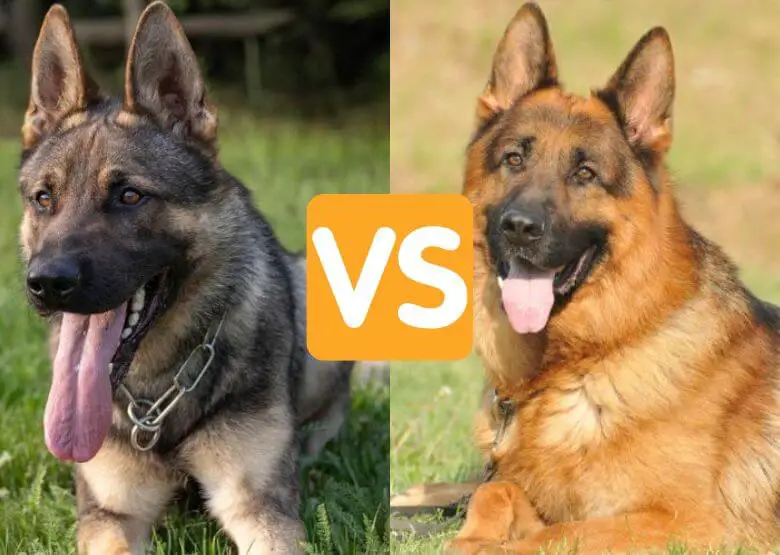Table of Contents
The German Shepherd dog breed appeared in Germany in 1899 as a herder and sheep guard. Nowadays, it is very popular worldwide, for example, it is the second most popular breed in the USA.
These dogs are strong, athletic, alert, and very intelligent. It was considered medium-sized, but now large-sized Shepherds are common. The weight standard for male dogs is 60-90 lbs (27-41 kg), and for female dogs, it is 50-75 lbs (22.7-34 kg).
German Shepherds are amazing animals that are easy to raise and train. Though very active, they cannot be a good fit for couch potatoes and people whose homes are not too large.
As working dogs, Shepherds are usually involved in law enforcement services and the military. They protect properties, detect drugs and explosives, rescue people, and are used as guide dogs in social services.
These dogs make very good pets and companions. They like training, dog sports, and communication with their owners. They absolutely enjoy playing, running, hiking, walking, doing jobs around the household, and protecting their family members.
You might have heard another name for German Shepherds – the Alsatian dogs. It is the name of the German-French border in Alsace-Lorraine. However, breeders decided to change the dog’s name back to German Shepherds in 1977.
German Shepherds are also famous for their wide representation at dog shows and competitions. By now, the two common lines have been formed in the breed – working line vs show line German Shepherd. They differ by appearance and temperament. If you don’t know which line to prefer when you want to adopt a German Shepherd, this article is for you. In general, we compare the energetic and protective working line pups to their derivative counterparts who are a bit lower-energy and more obedient. We also give you tips on making choices according to your lifestyle and habits.
Working Line vs Showline GSD: Comparison and Contrast of the Main Features
Let’s compare the appearance, temperament, possible health conditions, and types of both German Shepherd lines.
Appearance
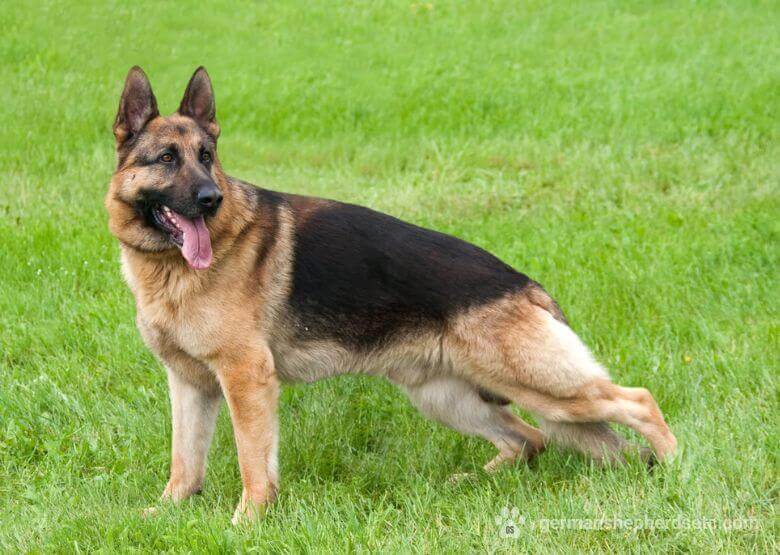
The back of the working line dogs is straight, while the show line features a sloped back. The former animals’ bodies are compact and strong, and the muscles are powerful, demonstrating a lot of endurance and perfect stamina. The showline dogs have broader bodies, weaker hips, and more angled hindquarters.
There is a difference in the coat, too. Working Shepherds have shorter and coarser coats than those of show-lines. The color of working line representatives is mostly sable. You can also meet long-coated dogs in this line, but they are not so common. The classic colors of show line dogs in tan and black or red and black, with darker colors on the saddle.
Temperament and Character
The character of working line GSDs is very energetic and fearless. They like high drive and demonstrate a lot of strong work ethic. These animals are confident, intelligent, and alert, and they can withstand threats and hazardous situations. The show line Shepherds are less alert, friendlier, and smart but with less energy.
If we compare a German Shepherd working line vs show line dogs, the first can become immensely loyal and devoted to the family members and their protection. However, they need the complete satisfaction of their physical and mental needs. Since they are immensely energetic, they demand a lot of exercises, socialization, and intensive training. You need to be an experienced dog owner to handle these requirements.
If you don’t like too much exercise and intensity in your life, the show-line Shepherd is a better choice. These pets are calmer and more easygoing. They are also more obedient, loyal, and smart and can be trained easier. Such dogs need a lot of mental stimulation, and their energy is also immense, but more controlled.
While working-line doggies are very alert and vigilant, with strong protective impulses toward their owners and families, show-line Shepherds are less agitated and more flexible in their natural protective instincts.
Health and Care
If we consider the working German Shepherd vs show dogs, the first is usually healthier and less prone to joint problems. Hip and elbow dysplasia is mostly a characteristic of show-line dogs because they have been bred for their distinctive appearance, where sloped backs and shorter hind legs play an important role. Such a body disposition leads to problems with the spine and bones.
Types of Working Line and Show Line German Shepherds
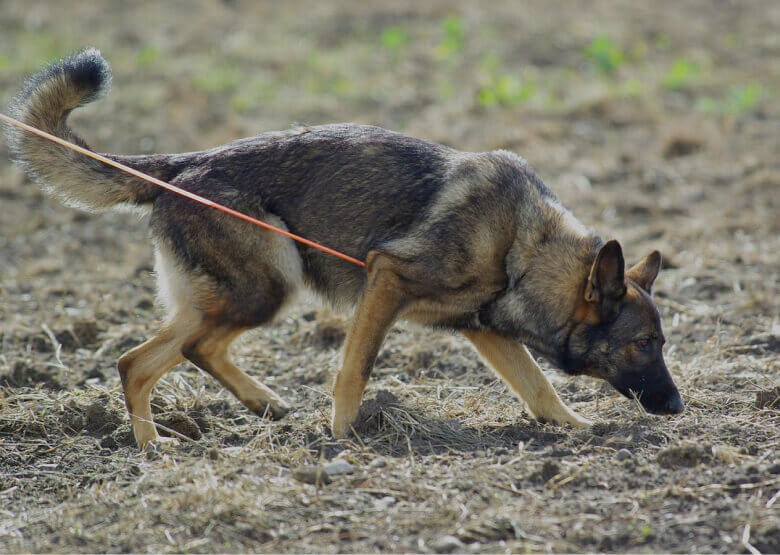
Both lines can be divided into specific types according to their origin and areas where they were first bred. For example, working-line GSDs appear in three types – the East German Shepherd (DDR), the West German Shepherd, and the Czech working line. The show-line Shepherds can belong to the Canadian show line, the American show line, and the Western German show-line dogs.
Distinctive Differences Between the Two Lines in General
Let’s sum up the distinctive differences between working line vs show line German Shepherd dogs. The first thing to consider is physical appearance. Working line representatives are large and athletic animals with a straight back and no slop in the hips. They can work for a long time without any damage to their health. The sloped backs of showline Shepherds lead to shorter hind legs. It’s good for show competitions but bad for health and lengthy exercises.
The working-line Shepherds’ coat is medium-length and double-layered. It allows them to work efficiently in any climatic conditions. The coat’s color does not matter too much here, either. Showline GSDs should be of rich dark colors, such as pure black, black and red, black and silver, or black and tan.
These types of German Shepherds differ a lot by their temperament, too. Working-line dogs are always alert and sensitive. They do not tolerate abrupt movements and can become aggressive and attack the object for biting. It is no wonder – they are usually trained for that. They need specific exercises for the development of their tolerance, intelligence, and stamina. Showline dogs are much calmer and home-friendly. They can intimidate people but do not apply violent aggression to them. They can attack, of course, but only if something threatens them.
As for differences in training, they are also substantial. Working-line German Shepherds are meant for work in the military or law enforcement, so they are trained to meet the standards of these jobs. Such characteristics as survival skills, pain tolerance, and endurance are usually developed. Showline dogs are raised for show rings. Their training aims to teach them to meet the requirements of the dog shows. So, they need to look great and be well-structured and obedient.
A Brief Overview of a Working Line German Shepherd
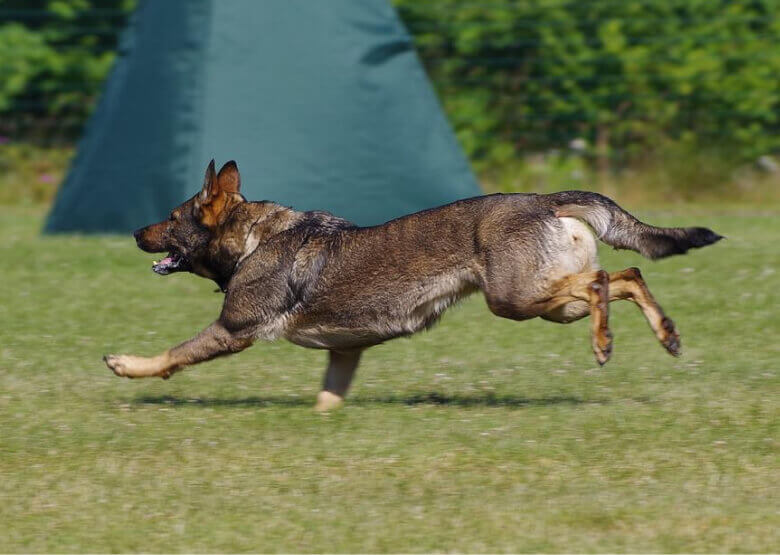
These amazing German Shepherds have an aesthetic and a bit intimidating appearance. They are physically strong and capable of working in severe conditions. They are stronger and more athletic than showline dogs, with straighter back and better health. They come in 11 coat colors – black and tan, black sable, and solid black are the most common among them. Their posture is wolf-like, and they are perfect workers, searchers, and rescuers.
The history of this type of German Shepherd started in the 1850s when Germany standardized dog breeds depending on their appearance and working skills. Max von Stephanitz supported standardized breeding and spent 35 years developing a breed with perfect herding capabilities. Horand von Grafrath was the first German Shepherd dog.
In the 1900s, modern working-line German Shepherd types, like the Czech, West, and East/DDR working-line GSDs, appeared. All these types are distinguished by a straight back and less angulated hips. They have upright pointy ears and can endure pain better. These animals can perform under pressure demonstrating their best qualities aimed at hunting for prey, fighting, and defending. Therefore, they are widely used for the military, police work, detection of drugs and bombs, searching for people, guidance, personal protection, guarding, carrying messages, working with disabled people, and providing therapy to them.
These dogs are medium to large, with 24-26 inches (61-66 cm) of height for males and 22-24 inches (56-61 cm) for females. Boys usually weigh about 66-88 lbs (31-30 kg), and girls’ weight is around 49-71 lbs (22-32 kg). They are healthier than many of their counterparts, and their lifespan is 10-13 years. These German Shepherds seldom suffer from hip and elbow dysplasia but are prone to GDV (bloat) and pancreatitis.
These animals are brave, incredibly loyal, independent, intelligent, energetic, and versatile. They are also territorial and protective. You need to exercise the dog physically and mentally to develop all these skills and characteristics. However, training is not a problem because your doggy is usually very intelligent and learns easily.
The coat is double-layered, and it sheds heavily all year round. You do not need to groom it so often as a showline dog, but brushing and taking care of the teeth, ears, and nails are important parts of routines. If trained properly, your dog will be good to other animals and children.
A working-line German Shepherd costs $1,500-$4,000, depending on the breeder and the bloodline.
Advantages and Disadvantages of Working Line Shepherds
Working-line Shepherds have many advantages, but keeping them at home may also result in certain disadvantages. So, let’s have a look at both.
German Shepherds are multipurpose working dogs with great working ethics. They were initially bred for herding, but they are great at other jobs, like police assistance, military, guarding, therapy of the sick and assisting the blind, guarding property, and even starring in movies.
These working-line animals are committed, loyal, and well-balanced if trained properly. They are usually trained to work under pressure and keep calm in strange environments. These Shepherds are immensely protective and can be perfect family pets, serving as both companions and guards. However, they can be intimidating and quite aggressive to strangers.
Since working-line German Shepherds are very popular, you can find a lot of information about their raising and training. There are many communities that can answer all your questions about their temperament, health, training, and nutrition, so you can always find the answers, advice, and support.
Nevertheless, the breed has some disadvantages you need to consider before taking this doggy home. Working-line Shepherds require a lot of training and maintenance. You need to have much time for their physical and mental stimulation, socialization, providing an appropriate diet, and meeting other needs.
The second thing to consider is your leadership skills. If you want to train your dog properly, you must become a commanding leader of the pack. Establishing strict boundaries and not allowing your pet to break them is necessary. These dogs are not suitable for you if you are mild and avoid commanding behavior. They can suffer from separation anxiety, so if you are at work all the time, you cannot adopt this animal if you don’t want it to suffer.
These doggies belong to large breeds, so they need much space to thrive. If you have an apartment, the animal’s weight and height do not fit it. They are full of energy, so you should exercise them a lot to avoid destructive behavior and bad habits.
A Brief Overview of a German Shepherd Show Line
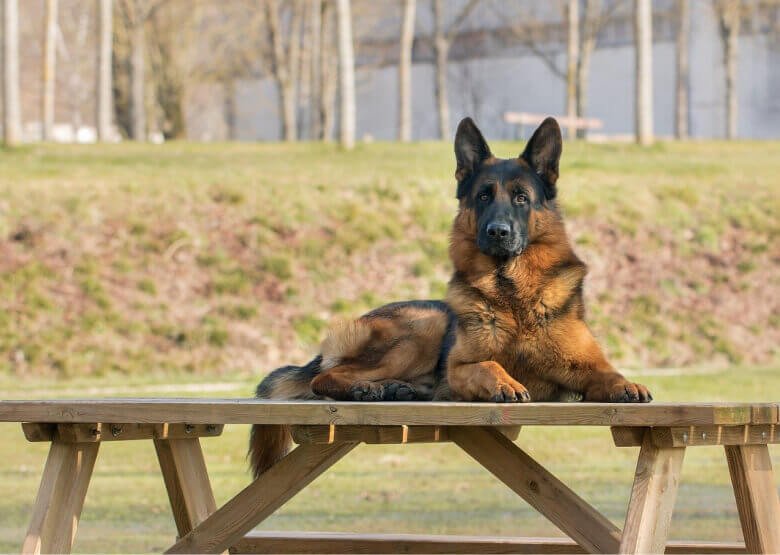
These dogs are bred for participation in conformation shows. Their raising demands a lot of attention, time, and care efforts. However, European breeders believe this type is easier to raise because they do not require much patience and effort.
The German Shepherd show line dogs are deeper in color because the standards require darker coat hues. The AKC even disqualifies animals with dilute colors, like blue and liver. The dogs also need to have black noses. The bloodlines for shows also have triangular and erect ears, a broad head, and angled hindquarters.
These dogs are friendly and good-tempered, so they can become great family pets, or you can raise them as effective guard dogs. They are very intelligent and can be trained easily, but they need authority and a strong leader to be guided.
Show-line doggies are trained differently, and they require much mental stimulation and physical exercise. They also need a lot of grooming.
An important characteristic of their appearance is their shorter back legs and longer front legs, which makes their back sloped. Their bones are thinner, but their bodies are larger. Hip angulation is more prominent in American show-line dogs than in their European counterparts. This trait is not original to German Shepherds, but breeders and authorities promoted it specifically to win competitions. However, this feature can cause severe orthopedic problems because of a curved back and angulated hindquarters. They are prone to arthritis, hip and elbow dysplasia, allergies, and bloat.
The price of a showline German Shepherd is rather high. They can cost about $2,000-$2,500, and it can be even higher if the dog has a unique color or comes from an outstanding bloodline. If you want a Shepherd with such a pure pedigree, you may even need to pay $4,000 for it.
Advantages and Disadvantages of Show Line Shepherds
Showline Shepherds have their advantages and disadvantages. You need to know about them before adopting the animal.
These dogs have a very appealing appearance, and it is their best advantage. They are beautiful with rich and dark colors. They are broad-chested and look pretty strong. Such a dog may even look a bit scary or intimidating. However, your doggy will be well-balanced, nice, and easy-going. It is very protective of its owner and can develop close bonds with those who love it. However, it may not be so nice to strangers. Though not too aggressive, the Shepherd can be threatening if it feels strange and unclear. This animal is truly noble, self-confident, and fearless.
The showline German Shepherd is trained with the help of special techniques for show rings. You can use these techniques if you want your dog for shows. If not, you can just keep it as a perfect family pet that is nice with children and other animals in the household. Such doggies are also great guard dogs if you train them to do it.
As for disadvantages, the main concern is health issues. Many of such problems appear from their genetics. Sloped backs can cause many complications, like hip and elbow dysplasia, and a broad chest is often a cause of bloat.
Your showline line dog may also require specific grooming and hygiene. You need to brush its beautiful coat very often. Its ears, nails, and teeth also require a lot of attention.
Another possible minus is the cost of maintenance. The grooming, training, and feeding requirements are high, so you should prepare to spend a lot of time and money.
FAQ
Which is better – showline or working line GSD?
We cannot say exactly which dog is better. Everything depends on your purposes, needs, and lifestyle. Working-line GSDs are very energetic, strong, and protective. They are ready for intense work and guarding. That is why your lifestyle has to be very active. If you need a calmer animal for your family, opt for a showline Shepherd. There is a pleasant bonus here – you can show your doggy at the competition and win a medal.
What are the different types of a German Shepherd working line?
There are three main types of German Shepherd working lines – West, East/DDR, and Czech working lines. They are different by their appearance, temperament, and working qualities.
What is a showline German Shepherd?
A showline German Shepherd comes from a West line. It is a calmer, friendlier, and more obedient dog with affectionate loyalty to its owner and the family. These dogs are divided into European (German) and American show lines. American German Shepherds have a more sloped back and angled hindquarters than their European counterparts.
Are working-line German Shepherds smaller?
Yes, working-line German Shepherds are a bit smaller, but they are bulkier. Their body structure is thicker, and they have straighter backs and longer back legs than their showline counterparts.
Final Thoughts
So, now you can compare the working line vs showline GSD by their appearance and qualities and decide which type is better for you and your family. You have to think thoroughly before taking a German Shepherd home. Sadly, rescues and dog shelters have many Shepherds taken by inexperienced owners who didn’t know how much effort they had to contribute to those magnificent dogs and finally gave up.
Any representative of these German Shepherd lines is great, but you need to understand how much time you have for exercising and training. These dogs are very smart and energetic, so you should be ready to do a lot of different activities with them. This pup can get bored, anxious, and rather destructive if left alone. So, take time to learn more about each of the lines and decide reasonably which pet will be the best match for you.
